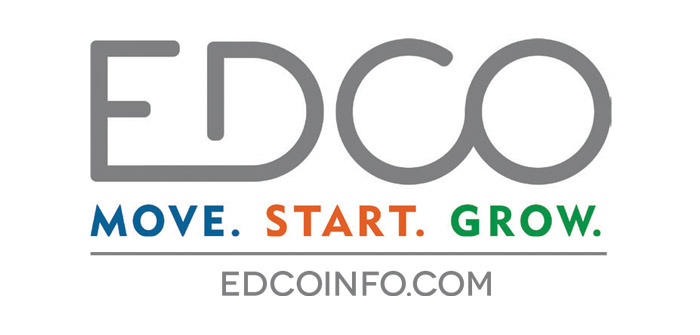I am honored to have the opportunity to share some perspective on the Central Oregon economy. EDCO invests significant human capital researching industry trends and mining and deploying resources to assist local companies in achieving their goals. EDCO staff meet regularly with businesses and industry groups to ensure we are working to create a diversified local economy with a strong base of middle-class jobs across the Central Oregon region. Our relationships and data provide valuable insight into what’s happening in the local economy. Unlike economists or forecasters, our team is in the trenches, in real-time, learning about what challenges and opportunities exist for local businesses. We meet with over 400 businesses each year, providing them with tools and resources to help with challenges like workforce availability, market penetration, physical space requirements, access to capital, and more.
In last year’s article, I predicted businesses would have to “claw and scratch their way” to profitability again by investing in their employees, automating processes, solving high-level supply chain shortages, and weathering further inflation. Most of these predictions became reality across many industries. As for inflation, it appears to be slowing due to a decline in the cost of goods and lower prices at the pump. This should allow the Federal Reserve more breathing room to “tap the breaks instead of slamming on them,” to put it in State Economist Josh Lehner’s words. Still, the cost for core services remains high, largely due to labor cost increases. EDCO saw these constraints impact projects we worked on throughout 2022.
Many of our pending projects stalled last year due to labor shortages in construction, permitting departments and on factory floors, to name a few. Companies have had to reconstruct their capital stack, wait for building materials and await permits to start and complete projects. EDCO completed 17 projects in 2022, which, for comparison, was a record for one quarter alone in 2019. While the total number of completed projects is down from previous years, the number of jobs created by these projects is predicted to be up. EDCO is projecting 314 jobs will be created (actual job numbers won’t be available until July), which is nearly on par with the 343 jobs that were created across all 36 completed projects in 2019.
Central Oregon continues to be a highly desirable place to live, and the population continues to grow. Crook County led population growth across the State, with a 2.22% year-over-year increase. Deschutes County came in third with a 1.79% increase, behind Crook and Polk Counties (1.85%), according to the Portland State University population forecast. While this growth is a bit modest compared to some previous years, we expect Central Oregon’s overall population to continue rising at a healthy rate regardless of macroeconomic variables.
In November 2022, Central Oregon reached an all-time high, seasonally adjusted non-farm employment level of 105,400. Average income levels across Oregon have also soared to $61,596 annually, up 8.2% over the previous year. This increase brings state wages to 96% of the national average, closing the gap from 2011, when Oregon’s average income was 88% of the national average. Higher incomes mean higher wages, which means businesses must grow revenues or decrease expenses to remain profitable. That said, the income surge is expected to slow to 2.4% in 2023 according to forecasters. Some of our trusted economic advisors are predicting job losses in certain industries related to the housing market, which could begin to alleviate some of the recent workforce shortages seen in other industries. This could sway the labor market towards more favorable conditions for employers, a welcome reprieve for many of the companies we serve.
EDCO’s portfolio of pending projects provides a valuable barometer to the future economy. This portfolio is made up of companies that have indicated they will make a final decision within a year to locate here (Move), achieve a major milestone or raise capital (Start), or expand existing operations (Grow) in the region. The organization is working on 133 projects across the region, representing an anticipated 4,868 new jobs, the strongest pipeline of jobs we’ve seen in my 14 years with EDCO. Of these pending projects, 60 are Grow projects, 33 are Move and 40 are Start. As shown in the graphic, advanced manufacturing, lifestyle products and high technology industries make up 75% of our pending projects pipeline. Not all of these projects will come to fruition, but based on historical outcomes, we expect Move projects to convert at a rate close to 20% and Grow and Start projects to convert at a rate north of 70%.
We never truly know what economic shifts may be ahead, given variables like housing costs, access to childcare, labor shortages, and limited availability of land and commercial buildings, all of which continue to be headwinds here in Central Oregon. However, some breathing room is occurring with decreasing demand and increasing supply of these resources. A growing entrepreneurial community, an expanding post-secondary education system focused on delivering relevant training, and our diverse mix of industry will help insulate Central Oregon from economic storms. This was most recently illustrated by the fact that Crook and Deschutes Counties rebounded from pandemic-related job losses faster than most other counties in the State.
To provide further geographic perspectives I’ve called on our Local Area Directors from across the region to paint a picture of what they are seeing in their respective communities.
Insights from the Field
EDCO Venture Catalyst Director, Deanne Buck
In tandem with EDCO’s Local Area Directors, who represent a city or county within Central Oregon, EDCO’s Venture Catalyst Director provides support for startup businesses across Deschutes, Crook and Jefferson Counties. Currently, EDCO is working with 40 startup companies, mostly in lifestyle products and high technology industries, that span ideation to maturation and household name brands. These projects include things like completion of a prototype, acquiring investment or bringing a product to market, and represent an anticipated $4.2 million in investment.
This year will mark the 20th anniversary of the Bend Venture Conference (BVC), an annual event hosted by EDCO that brings together entrepreneurs, investors, students, and business leaders. Last year the conference featured 14 companies pitching on the BVC stage and over $850,000 being invested.
After two years of robust levels of venture capital investment in Oregon, there are predictions of an investor pullback in 2023. As such, EDCO is more focused than ever on providing support for entrepreneurs through connections with experts and mentors in the community, exposure through BVC and monthly PubTalk programming, introductions to angel funders, and referrals to Business Oregon. EDCO will continue to collaborate with local partners such as Oregon Outdoor Alliance (OOA), BendJS (JavaScript) and Cultivate Bend to drive diversified industry growth and increase the number of Central Oregon startups that achieve long-term success.
Bend Area Director, Don Myll
The pandemic is mostly in the rearview mirror and the expansion of industrial land supply along with the addition of the 24-acre OSU-Cascades Innovation District should serve as foundations for continued economic development activity. Increasing supply of industrial land, after several years of decline, is close to becoming a reality. As a result of focused efforts by the City to refine zoning and provide development incentives, Juniper Ridge, the City-owned industrial property on the north edge of town, may become available for development and job creation late in 2023. Combine this with the planned residential and commercial development at Stevens Ranch / Stevens Road Tract, and companies will have an increased supply of land with which to scale.
There are currently 63 pending projects in Bend, representing 47% of EDCO’s total pending project list and an estimated 829 jobs. Local bioscience companies represent most of this growth, with 468 jobs projected to come from the scientific sector. EDCO continues to work with partners to address workforce shortages, supply chain friction and promote expansion of Bend’s Urban Growth Boundary. Outcomes from these efforts may fall beyond the scope of this forecast.
Redmond Economic Development Inc. (REDI) Director, Steve Curley
Focusing specifically on Redmond, 2023 looks to be a year of continued growth as interest remains high in ‘The Hub of Central Oregon’. Redmond’s central regional location, along with its availability of land, make it a desirable location for businesses. Projects that were slowed due to supply chain challenges have started moving again and there are currently 26 in the pipeline. These projects account for a projected capital investment of $662,415,000 as well as a potential 3,461 jobs, with over half of those being in advanced manufacturing. These numbers include two large projects that are expected to bring over 1,000 jobs each to the area over the next five years. Interest rates, however, could have an impact on these projects.
The City of Redmond sees approximately seven people a day moving to the community and well-paying jobs will be necessary as the community grows. The industrial vacancy rate remains extremely low and there are several flex spaces that will come online, with discussions of more to come. Redmond’s available land supply continues to be a strength and long-term planning shows that while it will be absorbed, there are new industrial lands in the works that should help to maintain that position. All in all, the outlook for Redmond’s economy in 2023 is strong.
Sisters Area Director, Eric Strobel
2023 looks promising for the Sisters community. 85,000 square feet of industrial space between three projects is currently under construction and slated to come online, which will provide opportunities for local companies to expand and for recruitment of new companies to the community. The Clearpine building, a new 12,000-square-foot office building, will open its doors for commercial leases this year. Sisters Coffee Company has completed its expansion into a new 11,000-square-foot roasting facility that will include offices and a retail area, while two additional businesses, Sisters Meat and Smokehouse and Personalized Nutrients, are beginning expansion projects. In total, Sisters has 12 economic development projects in the pipeline, representing a potential 96 jobs and $11.7 million in capital investment.
Explore Sisters, the community’s new destination management organization, is up and running with Executive Director Scott Humpert at the helm. EDCO will be working in tandem with Explore Sisters and the City to align resources around the three key issues affecting businesses: housing, transportation and daycare.
Prineville / Crook County Area Director, Kelsey Lucas
Prineville continues to outpace micropolitan areas across the country in both population and business growth. In fact, Prineville ranked ninth as the Most Dynamic Micropolitan in the United States in a 2022 study done by Heartland Forward. These rankings evaluated 536 communities nationwide and analyzed measurements including employment from young companies, job growth, income and GDP growth, as well as pandemic recovery. Crook County was the fastest to fully recover and reach pre-pandemic employment numbers in the state due to the economic diversification seen over the past decade. The rapid recovery can be attributed to the growth in the high-technology industry related to information, professional service and construction jobs.
Looking forward, Prineville has the highest amount of projected capital investment as compared to other cities in the region. There are currently 21 pending projects, representing 446 expected jobs and over $1.9 billion in capital investment. This growth will help to soften the impact of potential job losses in construction and professional service industries that economists are forecasting.
Key priorities in 2023 include continued industry diversification and ensuring that foundational business development climate remains competitive. This includes working to re-designate the Crook County Enterprise Zone for continued use in attracting and growing businesses prior to the June 30, 2023, expiration date. It also includes going through the Center on Rural Innovation’s Rural Innovation Initiative to assess the entrepreneurial ecosystem, digital economy and inclusive workforce development assets and gaps. This assessment will help strategize and fund support mechanisms for prosperous jobs, transferable skills and sustainable industries for future recruitment and retention efforts in Crook County.
Sunriver / La Pine Director, Patricia Lucas
South Deschutes County has been growing very rapidly with La Pine ranked as the seventh fastest-growing city in Oregon for the 2020 census. The community is seeing robust growth in new development of single and multi-family units, with almost 500 coming online and permitting applications being considered at a brisk pace. The community commenced a $45 million water and wastewater expansion project that will serve an additional 1,500 homes and commercial businesses. This critical infrastructure will serve La Pine well in business attraction and retention efforts.
The Sunriver/La Pine Economic Development (SLED) program has been working with developers to create more industrial space with the goal of bringing more family-wage jobs and capital investment to South Deschutes County. Of the eight projects in the pending projects pipeline, six represent local businesses that are looking for additional space for their operations. In addition to these six growing companies, two companies from outside the region are considering calling La Pine home, which would bring a projected investment of over $51 million to the area. Sunriver and La Pine are especially alluring with the distinction of having readily available, competitively priced developable land with water, sewer, electric, gas, and broadband infrastructure in place.
Looking ahead, SLED will be implementing the strategy outlined in a recently conducted workforce development study that evaluated labor supply and demand to determine the types of businesses to attract to the community. Based on the results of this study, SLED will be working to align resources to advance growth in brewing/distilling, specialty food products, building products, outdoor products, and advanced manufacturing industries. With continued population growth and a focus on strengthening these diverse industry sectors, South Deschutes County is well-positioned for economic growth in 2023.




